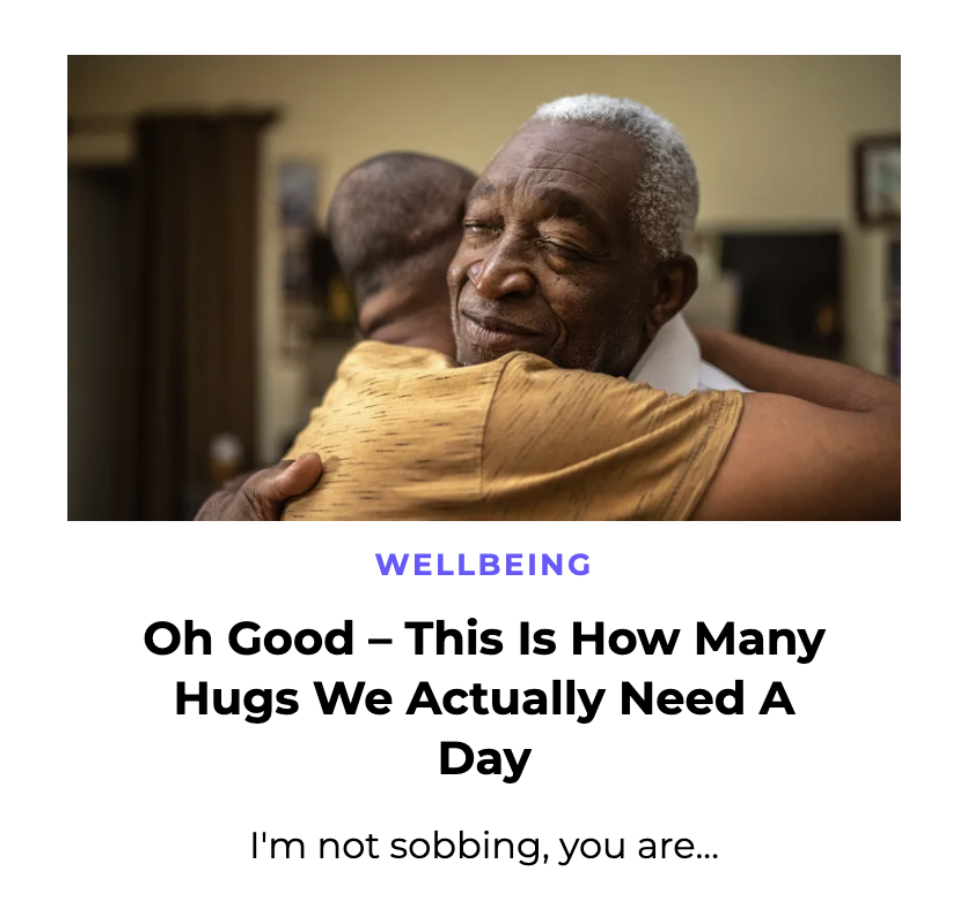Headlines 101: How to Construct Your Headlines for Ultimate Link Success
January 11, 2024 • 21 min read

- Why is your headline SO important?
- But what’s the difference between a subject line and a headline?
- What do journalists look for in a headline?
- How do you know when your headline isn’t quite right?
- The psychology of headlines
- Seven must-know hacks for crafting successful headlines
- Headline writing and your ‘why now?’
- My top 10 headline tips
Headlines.
They’re what we see on a daily (if not hourly) basis as consumers of the news.
They provoke joy, sadness, hope, shock, stress and much, much more. But the vast majority of people (especially your parents, who, let’s face it, don’t really have a clue what you do for a living) don’t realise that there’s often a digital PR agency behind the headline!
Yes, most average Joes and Joannes don’t appreciate that a whole lot of research, strategy, collaboration and ideation has gone into crafting that show-stopping, share-worthy, link-winning headline.
As digital PR professionals, we live and breathe headlines of news stories daily, but why are they so important? And just how much difference can they make to the success of your digital PR efforts?
In this blog post, I’ll dig deep into the nitty gritty of constructing headlines.
I’ll share insights on the human psychology that sits at the core of any efforts to craft high-performing news headlines and show how even the smallest of tweaks can have an immense impact on your open and response rates.
Why is your headline SO important?
Your headline is your one shot *sings Hamilton* to intrigue and impress a journalist.
It needs to be good enough that they simply HAVE to open that email and find out more.
Remember, this email is going to someone who gets flooded with hundreds, if not thousands of emails and press releases on the daily.
So, why should they stop and open yours?
Because your headline is so shocking, juicy, funny, ground-breaking, or alarming that it’s simply irresistible. When a journalist scrolls past your headline, you need to guarantee that the need to click through and read your pitch is overpowering.
In the world of sales, they talk about elevator pitches.
If you had just one minute to sell a product, what would you say to make damn sure the Dragons Den bought into your concept?
Well, crossing over to the world of digital PR, your subject line is your elevator moment. It’s your 10-20 word* chance to impress and get eyes on your precious pitch. No pressure, then.
*Top tip – Semrush research shows that 10-13 words attract the most attention and traffic.
But what’s the difference between a subject line and a headline?
If I’m being honest, I would treat them as the same thing. The only real difference is your audience, which changes your game plan ever so slightly.
- Your headline is going straight to the consumer.
- Your subject line is going to the journalist.
It’s the smallest difference, but it can change everything.
I tend to refer to our subject lines as headlines throughout any training (and in this blog post) as I think we need to get into the mindset as PRs that that’s what it is – give it the credit it deserves.
Sometimes, we can get it spot on, and a journalist doesn’t need or want to change anything.
This could be due to good timing and the fact that your ‘why now’ is perfect (we will get onto this in a bit) or that it’s more of an evergreen story and fits the bill no matter what.
Here are some examples.
Here is a headline we pitched to journalists:
- Kate Middleton’s Favourite Walking Boots Discounted In Time For Christmas
Here are just some of the headlines that were used:
- Kate Middleton’s favourite walking boots are reduced by £70 ahead of Christmas
- Kate Middleton’s favourite stylish and sturdy outdoor boots just got a whole lot cheaper- and they’re the ultimate Christmas gift for walkers
- Kate Middleton’s Berghaus walking boots have been reduced by 35% for Black Friday’
Here is a headline we pitched to journalists:
- Atlanta named the most stressed city in the US, according to new study
Here is the headline that was used:
Here is a headline we pitched to journalists:
- Study reveals Lincoln is the Chlamydia Capital of the UK
Here is the headline that was used:
But sometimes, we can simply be a source of inspiration for the journalist.
Maybe our research or story is part of a bigger story, or perhaps we didn’t quite nail the headline to the specific story the journalist was working on.
It might be the case that the journalist is already working on a story linked before receiving our research, and by the fate of the PR gods, our pitch fits like a glove – so they include a stat or a snippet!
Remember, we can’t predict journalists’ calendars and to-do lists (how good would that be?!), so considering you’ve done enough to raise intrigue, hats off to you!
Examples:
Here is a headline we pitched to journalists:
- 179 billion pounds of damage in 2022: The global damage costs of natural disasters profiled
- Iceland Volcano Eruption: Study reveals global cost of natural disasters
Here is the headline that was used:
Here is a headline we pitched to journalists:
- Most popular skincare trends on TikTok in 2023
Here is the headline that was used:
Here is a headline we pitched to journalists:
- Are overplucked eyebrows making a comeback? Data reveals #2000sMakeup has >150m views on TikTok
Here is the headline that was used:
What do journalists look for in a headline?
I took to Twitter (or X – whatever you want to call it) to ask journos what they are really looking for when it comes to headlines. It’s always been a bit of a mystery to us PRs, as it can differ so much by different journalists.
Yes, I asked for comments for the other, but not a single person explained further, so I guess we will never know!
Interestingly, most journalists said ‘straight to the point’, which only verifies my ‘cut the fluff’ motto.
However, I do believe that there is no one straight answer, and your personalisation will really depend on the type of story and the journalist you are sending to.
Never forget that it is not your job as a PR to write the article – as much as many of us aspire to be budding writers, we aren’t the journalists in this equation.
We are simply here to highlight the cold, hard facts or data and shine a light on a potential story. The journalist will use this and create magic. It’s the best kind of teamwork, really!
Your research is vital here, and I believe you should spend at least 10 minutes researching before finalising your headline. This means getting on relevant publications and checking out how journalists are constructing their headlines so you can tailor yours to the right sector to increase interest and then success.
You may find that certain sectors will construct their headlines differently – which makes sense, as each story within the sector serves a different purpose and will also have a different audience.
Always think about the audience and purpose.
In my marketing module at uni, something my tutor said always stuck with me, and that was that anything in marketing links to human emotion and behaviour. You aren’t selling a product or service; you are selling a feeling, a story and a purpose, and nothing can ring truer than within digital PR.
As an example. Let’s take a comment you have from your expert at a car tyre company. You have some tips and an expert comment from the mechanic about tyre safety. Now picture this: there are snow warnings in the UK. And it’s Christmas. And everyone’s travelling.
I can hear the cogs in the PRs’ heads everywhere churning.
You aren’t selling tyres. You are selling safety. You are selling a piece of mind at Christmas. You are selling getting home to your family safe and sound. That’s where your story lies, and your headline.
Off the top of my head, we could go with something like:
- Tyre expert reveals three warning signs your tyres could be dangerous in the snow
- 3 warning signs to look out for when driving in the snow this Christmas
- Driving home for Christmas? Three things you need to do to your tyres before you leave, according to experts
- Tyre safety expert issues warning of 3 essential checks to do before driving in Christmas snow
And so on…
How do you know when your headline isn’t quite right?
Often, we can pitch our story and… tumbleweeds. (Checking for coverage 10 minutes after sending won’t help – we know we’re all guilty!)
This can sometimes be down to your headline not being quite right, and it can make a big difference.
Your email open rates are the best indicator of whether your headline needs work or not.
- If your open rate is high but you have no coverage – it could be your pitch, your contacts or your bad timing.
- If your open rate is low – it’s most likely your headline needs some work!
What is a ‘low’ open rate? I’d say that anything over 25%+ is right on the money.
If you need to switch up your headline, I would question the following:
- Who is the audience of this story? Does the headline reflect this?
- Is it too long? Too complicated? Does it cap important info?
- Is the important information at the beginning of the headline?
- Is it too short? Not enough detail?
- Did you include a stat? Was the stat shocking enough?
- Could the stat be flipped into a better format? (ie into %, fraction etc)
- Did you do your research and tailor it accordingly?
- Is it relevant to now?
The psychology of headlines
I’ve always been super interested in the why of headlines. They have the power to shape the way we think. Psychologists have known (for a really long time) that first impressions matter, and what we experience in the first instance tints or colours the rest of our process. By drawing attention to certain details, in our case, figures, statistics or words, we can activate a different perception or experience for the reader.
What was the last article you read? That you voluntarily clicked on out of interest? Now, think about WHY you did so. I would put money on it being the headline.
Now, I’m no psychologist, and I am not going to try and claim to teach you some cool hidden meanings of linguistics, but when it comes to headlines, there are a few tricks which can help you tap into the why and hopefully create better headlines.
Seven must-know hacks for crafting successful headlines
1. The element of surprise!
According to research from author and journalist Ben Parr, one of the best ways to catch (and hold) someone’s attention is to employ the principle of disruption. By this, I mean presenting something wholly unexpected or abruptly breaking a pattern. Doing this is effective for two reasons: surprise catches us off guard and immediately pulls our attention, and unfamiliarity creates intrigue, which holds our interest.
Ever come home to a surprise gift of flowers? Nice, right?
Well, that experience of unpredictable pleasantries also applies to headlines. When we encounter an unexpected positive, it does some lovely things to the pleasure centres in our brains, which means that surprises actually stimulate us and get our attention. In fact, we may subconsciously prefer an unpredictable experience over what we think we want.
As an example, everyone thinks (more like knows) that Manchester is the greyest and rainiest city in the UK.
Or is it?
If you have a headline revealing the opposite and can prove it with data, you might be in for a win!
Here’s a real example in the wild.
This headline plays right into assumptions that Cristiano Ronaldo is one of the wealthiest sportsmen in the world and that his relationship with Georgina Rodriguez should top the rich list of football couples.
Is everything we know a lie? Surely, there can’t be a couple with more money in the bank than Ronalguez?
Instantly, this headline makes us want to click and read the exclusive scoop about soccer star salaries.
2. Do you like questions?
Questions prime our curiosity.
As humans, we have an instinct for curiosity (we’ve all seen horror movies…why do they always go into the basement?!), and the same goes for headlines.
Apparently, simply seeing a question mark begins to stimulate our brains. The best question headlines ask something that the reader can empathise with, relate to or would love to see answered.
Not only this, but if you ask any SEO, they will tell you there are so many other search-related benefits. If you are answering a very in-demand question, you may find yourself getting more attention than just press clippings!
A real example in the wild…


Straight away, we’re asking the questions ourselves. The inclusion of question marks forces us to begin using powers of thought to form conclusions and, crucially, grow hungry for the answers.
3. Negatives (and negative superlatives!)
You may have heard of the danger reaction or the negativity bias. These are key concepts in human psychology that countless studies have explored (such as this one from the BBC), highlighting how consumers respond quicker to negative news, events and stories.
Beyond the BBC’s findings, academics from across the globe and those writing for Forbes Magazine also drew similar conclusions, showing how negative stories drive greater engagement and increased clicks and revealing that the inclusion of each negative word in a headline boosts CTRs by 2.3% a pop.
Wowzers.
One simple way you can do this in practice is by using negative superlatives.
Try to use negative words, such as don’t, avoid or warning, rather than the positive alternative. As terrible as it sounds, try to tap into the negative if possible and use the above stats to your advantage.
Flip the story if you can, and remember that your client won’t always be opposed to you pushing the negative narrative.
Here’s another real example in the wild…

‘Most’ = superlative.
‘Dangerous’ and ‘deadly’ = negative.
The angle here is emotive; it speaks directly to our innate desire for self-preservation and draws us in with the promise of those all-important answers.
4. Numbers
Numbers work well in headlines as they link to the fact that humans strive for predictability and often dislike uncertainty due to the stress it can cause.
Using numbers helps to provide specific expectations for the reader, letting them know precisely what they are getting into before they start reading.
This one is such a simple tactic, but adding numbers to your headline could improve its performance with journalists!
The same goes for adding stats and figures. If you have some juicy numbers or a stat which boosts your story, don’t be afraid to utilise it in the headline. It adds credibility, boosts trust signals, and satisfies the need for certainty among readers.
A real example in the wild.
Before we’ve even clicked on this link, we know that the author will provide us with a finite list of suggestions for maintaining our homes in winter. This limit allows us to gauge how long or demanding the article will be, making it seem more appealing (especially if we’re catching up on the news on our phones whilst commuting).
5. Refer to the audience
Tip no. 5 is another small change, but one that can make a whole world of impact.
By simply referring to the audience and addressing them directly, the reader (or journalist, in the case of headlines) feels known and named (or named and shamed!).
Doing this taps into human psychology in two main ways. Firstly, it links to our survival instinct and our active search for solutions. It makes the reader go, “Omg, that’s me!” and feel as though the content of the article has been written especially for them.
Secondly, it feeds into people’s self-interest.
In Dale Carnegie’s landmark series of lectures on How to Win Friends and Influence People, he explains how people are inherently (and unavoidably) obsessed with themselves.
You, me, the journalist you’re pitching to, and the bloke sitting opposite you on the bus – we’re all concerned about ourselves first and foremost.
As PRs, we can tap into this, speaking directly to our readers’ needs, emotions and desires.
We can simply reword headlines to shift the focus away from the vague third person (‘he’, ‘she’, ‘people’) and towards the specific second person (‘you’, ‘your’ and ‘you’re’).
Let me take you back to the wild for a real example.


With one or two simple words, the angle of these stories becomes hyper-focused on you and me. We’re instantly engaged on a personal level, wanting to know more about how the subject matter inside the article relates to us as individuals.
6. The Curiosity Gap
There’s a psychological phenomenon called the curiosity gap, which is the gap between something a person already knows and something they want to know.
You basically want to tease the reader by giving them a little bit of information at the outset to pique their interest but not so much as to render your article redundant.
For headlines, this works wonders. Offer up a nugget of information as bait for the journalist but leave the really juicy bits for the email within.
Once the receiver knows a little, they will simply NEED to learn more in order to fill in that curiosity gap. Don’t give it all away in your headline!
A real example in the wild…

From the headline, we know that we need a certain number of hugs each day (and that this number is likely higher than we might expect, given how the writer is sobbing). Crucially, though, we don’t know the precise number needed, and we don’t know why this is the case! Link = clicked.
7. Expert advice
As much as we desire the far-out and unexpected, we also want predictability and security in our lives. Everything in moderation, right?
We all need some level of control and order in our own little worlds, which is why we seek out expert tips, advice, laws, rules, and systems to make better sense of things.
Don’t believe me?
I’m sorry to break it to you, but the numbers don’t lie. Globally, searches for “What is…” and “How to…” queries consistently top the charts, so much so that Google itself is heralded as a question and answer engine. What’s more, the high-ranking responses are those from trustworthy sources that have expert-backed information.
We all look for answers to everyday questions to understand and organise our worlds (I bet you searched for “When do my bins go out?” after the Christmas period), and you can leverage this to your advantage when writing headlines. Make use of your in-house experts and provide journalists with that all-important stability, reliability and credibility they know their readers crave.
Look out! There’s a wild example up ahead!

Bringing security experts into the equation makes this advice piece all the more appealing to anxious readers. We know from the get-go that the content will provide advice we can trust, leaving us feeling confident that we’re doing the right thing to protect our best interests.
Top tip: If you’re using in-house experts in campaigns or reactives, make sure you link out to their author bio page. Showcasing experience and expertise with authorship provide strong E-E-A-T signals, which, as any SEOs will tell you, is fast becoming a prerequisite for ranking on SERPs and driving traffic to your site.
Learn more about E-E-A-T for SEO and digital PR in our recent blog posts.
- E-E-A-T: Everything You Need To Know
- 11 Author Page Examples That Demonstrate E-E-A-T
- The Role Of Digital PR In Demonstrating E-E-A-T
- Breaking Down E-E-A-T To The Author, Content & Brand Levels
Headline writing and your ‘why now?’
Your ‘why now’ is so important in digital PR, and I have a funny feeling it’s going to be even more mission-critical in 2024 as we see stories needing to be more specific to current events.
We can see this being due to a number of things, including the growing number of journalists and PRs and the rise of AI, amongst other factors (you can see Digitaloft’s predictions for 2024, including my two cents on ‘why now’ headlines’ and their importance).
So, what is ‘why now’?
Your why now is basically your current, relevant hook. It’s your way to link your research or campaign to what is currently happening in the world. Now, there are oh-so-perfect ‘why nows’ and some not-so-great ‘why nows’, but we need to ensure that we’re only offering the creme de la creme of time-sensitivity to uphold journalistic integrity.
Let’s look at some examples.
🙅 Definitely don’t…
Story – A travel expert providing tips and tricks on staying safe on your flight.
Hook – There’s just been a major aeroplane crash with fatalities that is creating headlines everywhere.
Why not? – It’s insensitive to the events unfolding and could negatively impact your brand’s public image.
😍 Definitely do…
Story – A piece of research on how TV and film can bring resurgence to old songs, looking into best-performing genres, artists and more.
Hook – The Saltburn movie (if you haven’t seen it, stop reading this and watch it immediately) has just made the song ‘Murder on the Dancefloor’ soar the charts!
Why yes? – It’s fun, appeals to popular culture, and ain’t hurting anybody.
Journalists are always looking for relevancy to stay on top of high-profile topics, especially those focusing on trends, current topics, breaking news and even SEO writers. If we can find a way to make our research even more relevant to the current day and what everyone is talking about, then let’s get cracking!
However, don’t be shoe-horning! There’s a difference between a lovely, smooth link into a trending news story and trying to put a square peg into a round hole!
I could go into a whole monologue about different ways to hook your story into the press landscape, but the most important factor here is to do your research on current topics and work out whether you have a hook. Be sure to check out today’s headlines in the press, have news alerts for your client’s topics turned on, check forums, and be on top of social media!
Here are just a few ways you could create your why now:
- Relevant film or TV show releases
- A celebrity in your research has hit the headlines!
- Financial statement or budget release
- The weather or season
- Seasonal event or occasion, such as halloween
- A celebrity engagement or wedding
- Many, many more…
My top 10 headline tips
- Research your journalists’ and sector’s headlines
- Know your audience (your journalist) and write for them
- Never mislead a journalist – tell facts and cut the fluff
- Never compromise on length for sense
- Make sure your stat is in the best format possible
- Think what emotion you are selling with this story and tap into that
- Flip it to a negative angle if you can, and it works
- Have you got your ‘why now’?
- Always brainstorm your headlines and get a second opinion
- Is it clear, straight to the point and concise?
For any digital PR looking to grab the attention of journalists, create a positive reputation within journalist circles and be the one with the high-flying open rates (and all the links!), your headlines are just so important.
If you hone your craft and put in the time to research, analyse and nail those headlines, you will reap the rewards.










